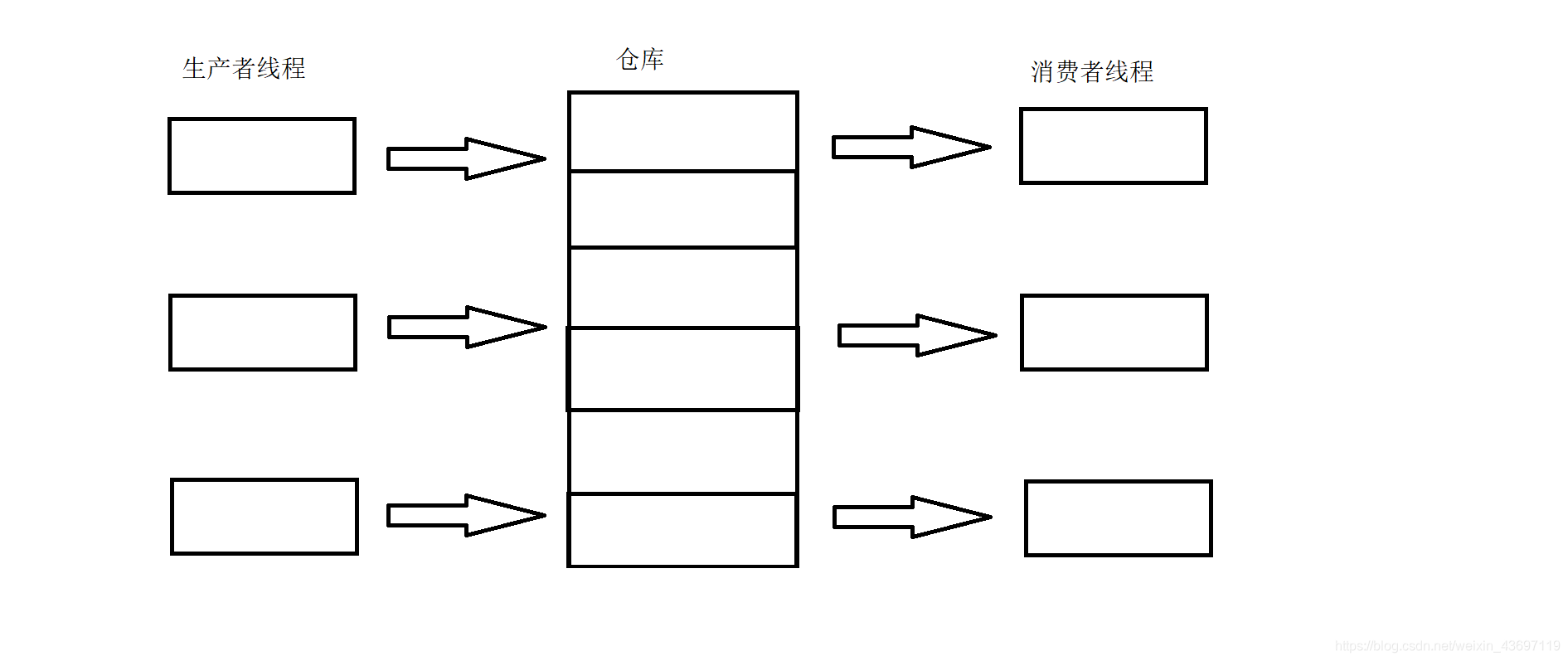同步
- 什么是同步:
通过条件判断实现对临界资源访问的合理性 - 实现:
条件变量:当一个线程互斥地访问某个变量时,它可能发现在其它线程改变状态之前,它什么也做不了。所以用条件变量可以睡眠的等待某一种条件出现。 - 原理:
向外提供一个等待队列,以及等待与唤醒的功能
生产者消费者模型

一、一个交易场所
二、两个角色:生产者和消费者
三、三种关系:
- 生产者和生产者:互斥
- 生产者和消费者:互斥与同步
- 消费者和消费者:互斥
优点:
- 解耦
- 支持并发
- 忙闲不均
pthread_cond_wait 调用等待时释放锁,唤醒时重新获得锁
生产者消费者模型
10 class BlockQueue
11 {
12 private:
13 queue<int> q;
14 int cap;
15 pthread_mutex_t lock;
16 pthread_cond_t c_cond;
17 pthread_cond_t p_cond;
55 public:
56 BlockQueue(int cap_ = 4)
57 :cap(cap_)
58 {
59 pthread_mutex_init(&lock, nullptr);
60 pthread_cond_init(&c_cond,nullptr);
61 pthread_cond_init(&p_cond,nullptr);
62 }
63 //producter
64 void PushData(int data)
65 {
66 LockQueue();
67 if(QueueIsFull())
68 {
69 cout << "queue is full" <<endl;
70 SignalConsumer();
71 ProducterWait();
72 }
73 q.push(data);
74 UnlockQueue();
75 }
76 //Consumer
77 void PopData(int &out)
78 {
79 LockQueue();
80 if(QueueIsEmpty())
81 {
82 cout << "queue is empty" <<endl;
83 SignalProducter();
84 ConsumerWait();
85 }
86 out = q.front();
87 q.pop();
88 UnlockQueue();
89 }
90 ~BlockQueue()
91 {
92 pthread_mutex_destroy(&lock);
93 pthread_cond_destroy(&c_cond);
94 pthread_cond_destroy(&p_cond);
95 }
96 };

信号量
信号量是一个计数器,用来描述临界资源的数目,提供等待队列,提供等待与唤醒的功能接口。
实现同步:通过自身的计数器功能进行资源计数,对临界资源访问之前先访问信号量,通过计数判断是否有资源能够访问,若不能访问,等待计数-1(所以信号量为负几,则表示有多少线程在等待)
环形队列
环状结构起始状态和结束状态一样,不好判断空还是满,所以可以加入计数器
11 class RingQueue{
12 private:
13 vector<int> buf;
14 int cap;
15 sem_t sem_blank;
16 sem_t sem_data;
17
18 int c_step;
19 int p_step;
20 private:
21 void P(sem_t &s)
22 {
23 sem_wait(&s);
24 }
25 void V(sem_t &s)
26 {
27 sem_post(&s);
28 }
29 public:
30 RingQueue(int cap_ = 1024)
31 :cap(cap_),
32 buf(cap_)
33 {
34 c_step = p_step = 0;
35 sem_init(&sem_blank, 0, cap);
36 sem_init(&sem_data, 0, 0);
37 }
38 void PopData(int &data)
39 {
40 P(sem_data);
41 data = buf[c_step];
42 c_step ++;
43 c_step %= cap;
44 V(sem_blank);
45 }
46 void PushData(const int &data)
47 {
48 P(sem_blank);
49 buf[p_step] = data;
50 p_step ++;
51 p_step %= cap;
52 V(sem_data);
53 }
54 ~RingQueue()
55 {
56 sem_destroy(&sem_blank);
57 sem_destroy(&sem_data);
58 }
59 };
来源:CSDN
作者:*空白*
链接:https://blog.csdn.net/weixin_43697119/article/details/103475885